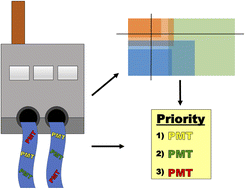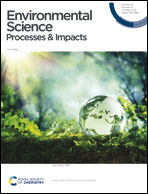Persistent, mobile, and toxic plastic additives in Canada: properties and prioritization†
Abstract
The hazards of many plastic additives on human and environmental health are well documented. However, little emphasis has been put on plastic additives that are persistent, mobile, and toxic (PMT) rather than persistent, bioaccumulative, and toxic. Due to their high mobility and stability, it is unlikely that wastewater treatment plants will effectively remove PMT plastic additives. Herein, an in silico analysis was performed to (1) assess the retention of PMT plastic additives registered for use in Canada in wastewater treatment plants; and (2) determine whether their physical–chemical properties and structural features can be used as identifiers for PMT plastic additives with particularly low retention. We identified 124 PMT plastic additives of which 52% had less than 20% removal from wastewater treatment based on predictions using the model SimpleTreat. Log Kaw, log Kow/Dow, and log Koc/Doc ranges were defined that are indicative of low retention PMT plastic additives. Furthermore, it was found that non-halogenated PMT plastic additives that contain nitrogen are most likely to be poorly retained in wastewater treatment plants. The results of this study provide screening and prioritization criteria, as well as a suspect list for PMT plastic additives.

- This article is part of the themed collections: Recent Open Access Articles and Contaminant remediation and fate


 Please wait while we load your content...
Please wait while we load your content...